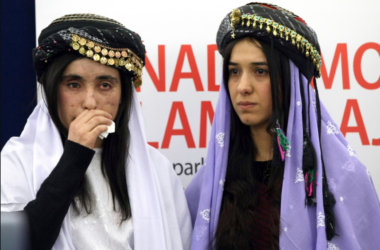New Delhi, India, is once again grappling with hazardous air quality, earning the unenviable title of the world’s most polluted city, according to real-time air quality data compiled by Swiss group IQAir. As of Friday, New Delhi’s Air Quality Index (AQI) reached a staggering 640, categorized as “hazardous.” This unsettling milestone highlights the ongoing air pollution crisis in the Indian capital, where residents are experiencing a decline in air quality.
These severe air pollution levels are attributed to a seasonal combination of factors, including lower temperatures, stagnant winds, and crop stubble burning in the agricultural regions of neighboring states. The result is a dense haze that engulfs the city, causing respiratory discomfort, itchy throats, and eye irritation among New Delhi’s 20 million residents.
The AQI readings in some monitoring stations reached approximately 480, reflecting extremely unhealthy conditions. To put it in perspective, an AQI between 0-50 is considered good, while an AQI of 400-500 is a significant risk to both healthy individuals and those with pre-existing health conditions.
Healthcare professionals in the city have reported an increase in respiratory distress, especially among children and infants. Doctor Aheed Khan shared his concerns, describing babies coughing and children with rapid breathing during his recent shifts. The hazardous air quality has prompted residents to seek air purifiers, creating a demand that has temporarily depleted air filter supplies. Relief is expected, with fresh stocks arriving in the coming days.
Officials in the region have warned that the current pollution levels are unlikely to see immediate improvement. They anticipate that the situation will persist for the next two to three weeks, exacerbated by the burning of crop waste, minimal wind speed, and falling temperatures.
A significant contributor to this seasonal surge in air pollution is the practice of crop stubble burning in states such as Punjab, Haryana, and Uttar Pradesh. Farmers typically burn crop residues after the harvest in October to prepare the fields for winter crops. This practice has significant implications for air quality, as it releases pollutants into the atmosphere.
The air quality crisis has also impacted the sports world, casting a shadow over the cricket World Cup hosted by India. India’s financial capital, Mumbai, has also experienced a notable spike in pollution levels. On Monday, Delhi is set to host a World Cup match between Bangladesh and Sri Lanka, heightening concerns about the air quality impact on athletes.
The concentration of toxic PM2.5 particles, which are less than 2.5 microns in diameter and can lead to severe health issues, has surged to alarming levels in New Delhi. On Friday, the concentration was 53.4 times higher than the World Health Organization’s annual air quality guideline value, underscoring the severe health risks.
As a response to the worsening air quality, local authorities have ordered the closure of junior schools for several days. While the suburbs still have schools operating, students boarding school buses have been required to wear masks. Furthermore, pet animals have not been spared the effects of poor air quality. Vets advise pet owners to avoid taking their animals on morning walks until the air quality improves.
While this air pollution crisis in New Delhi is a recurring issue during the winter months, it underscores the urgent need for long-term solutions to tackle air pollution and safeguard public health in one of the world’s most populous cities.








